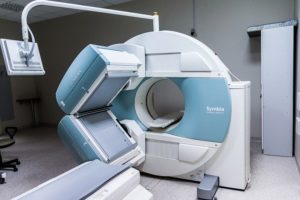Many years ago companies started to say ‘we are organized into project teams’. Professional projectisation was the thing. Until it became commoditised and meant nothing. No project team was equal to another. One has project leaders with budget accountabilities and great autonomy, another was a bunch of guys who did not want to be there and wrote minutes. Anything in between. Who cares today? ‘We have project teams’ sounds like we have electricity. You don’t get on the front page saying that, in your company, you switch that thing on the wall and light is produced on demand.
My prediction is that something similar is about to happen with ‘influencers’ . Everybody seems to have ‘them’. The proliferation of methods to find them and name them has contributed to it. Years ago, a not terribly well-respected, branch of Sociology called Sociometrics had some grasp of the real connectivity between individuals. Today you have many providers of those tools.
At The Chalfont Project, our Viral ChangeTM progammes use Social Network Analysis (SNA), because of its strong scientific basis and friendly commercial applications, the latter not compromising the former. It’s as good as it gets.
My non scientific analysis of the current usage of SNA to find influencers is as follows: 4 out of 5 companies who ‘have done it’, have no idea what to do with the findings. Shockingly, they have not done it anonymously or on an opt-in basis, which means that names of people have been known at least to HR/OD/L&D etc. You now have that elite group exposed to all, with no clear plans, but sent to an off sites to ask them to deploy Vision Success or Future 2020 or Alignment & Empowerment 2.0 or whatever the name of those ‘change efforts’ may have.
In a recent HR/OD conference I dared to say that the corporation has no right to unveil all that and ask people to ‘use their influence’ unless they have opted in anonymously; that being, a high influencer was probably not in the job description and not something for what people were paid for. They did not like it. Some people were convinced I represented the workers Unions (not an offense in its own right, but a proxy for obstructionism).
Besides the ones who ‘have done it’ but who don’t know want to do with it (I swear I am not kidding, these companies do exist), others have commoditised the concept and in the process have muddled it. You hear people talking about influencers and mixing up role models, talent management, volunteers, and, of course, champions or ambassadors. Companies now have ambassadors of this and that, like they have those switches on walls.
SNA, with its ability to map the real organization (that is, not the organizational chart) has untapped potential to discover how information flows, how knowledge and expertise is used, or, for sure, who are the highly connected individuals.
Using SNA and ‘finding the influencers’ must not become a HR/OD sport. It drives me crazy to see how we can easily kill one off the very few management innovations of decades. It seems like ‘Le beaujolais nouveau est arrive’, the new beaujolais wine has arrived, as we get every year from wine merchants, but in organizational version.
‘Identifying influencers’ is becoming something that companies do ‘because they can’. Bad management at its best.
________________________________________________________________________________________________
Our Feed Forward Webinar Series is now available to watch, on demand.

Watch our webinar Can you put your organization through an MRI? [1]
Yes you can. You can have a diagnosis. Learn how our online product 3CXcan provides this analysis based on the highest scientific principles of network sciences. In the current environment it’s important to base the recovery and the post Covid-19 organization with full understanding of its formal and informal connections, communication channels and internal collaboration. Suspend judgement about your assumptions and find the truth. This webinar will show real examples of this kind of diagnosis performed in real companies. Understanding the real organization, which may or may not be the one you assume it is, will show a completely new baseline upon which to navigate the future.
What attendees said:
‘Thank you for the opportunity to participate in this fantastic webinar. Both the depth of the discussion between Leandro and Carlos and the very intensive exchange in the chat inspired me.’
It was a great pleasure to participate in today’s webinar…. If you would have been sitting next to me, you would have seen a lot of ‘head nodding’ and heard a couple of loud ‘yes’es’ from the bottom of my heart.
WATCH NOW [1]
